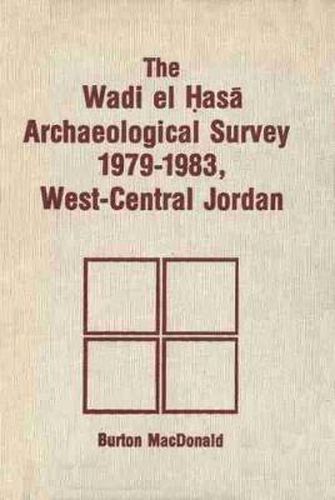Readings Newsletter
Become a Readings Member to make your shopping experience even easier.
Sign in or sign up for free!
You’re not far away from qualifying for FREE standard shipping within Australia
You’ve qualified for FREE standard shipping within Australia
The cart is loading…






In this major work Professor MacDonald chronicles an intensive and systematic archaeological survey of the southern flank of the Wadi el Hasa in West - Central Jordan. The survey resulted in the recovery of human evidence spanning the Lower Paleolithic to the Ottoman period (500,000 B.C. - A.D. 1918). The area is cut by a number of impressive and deep, south - to - north flowing wadis. As a region marginal for farming but stable for grazing, it would be the first to
empty out
and the last to
fill up
compared to more favourable regions. The methodology employed included a combination of purposive, predictive, and pedestrian transects. Lithics spanning the Lower Paleolithic to the end of the Early Bronze period (500,000 - 2000 B.C.) and ceramics covering the period from the Pottery Neolithic to the end of the Ottoman domination (4750 B.C. - A.D. 1918) were collected in the area. Sites surveyed included lithic and sherd scatters, camps, hamlets, villages, roads, milestones, fortresses, watchtowers, and mills.
This research sheds new light on the settlement of the area, which now appears to have been most dense during the Middle Paleolithic, Iron II, Nabataean, and Byzantine periods.
$9.00 standard shipping within Australia
FREE standard shipping within Australia for orders over $100.00
Express & International shipping calculated at checkout
In this major work Professor MacDonald chronicles an intensive and systematic archaeological survey of the southern flank of the Wadi el Hasa in West - Central Jordan. The survey resulted in the recovery of human evidence spanning the Lower Paleolithic to the Ottoman period (500,000 B.C. - A.D. 1918). The area is cut by a number of impressive and deep, south - to - north flowing wadis. As a region marginal for farming but stable for grazing, it would be the first to
empty out
and the last to
fill up
compared to more favourable regions. The methodology employed included a combination of purposive, predictive, and pedestrian transects. Lithics spanning the Lower Paleolithic to the end of the Early Bronze period (500,000 - 2000 B.C.) and ceramics covering the period from the Pottery Neolithic to the end of the Ottoman domination (4750 B.C. - A.D. 1918) were collected in the area. Sites surveyed included lithic and sherd scatters, camps, hamlets, villages, roads, milestones, fortresses, watchtowers, and mills.
This research sheds new light on the settlement of the area, which now appears to have been most dense during the Middle Paleolithic, Iron II, Nabataean, and Byzantine periods.